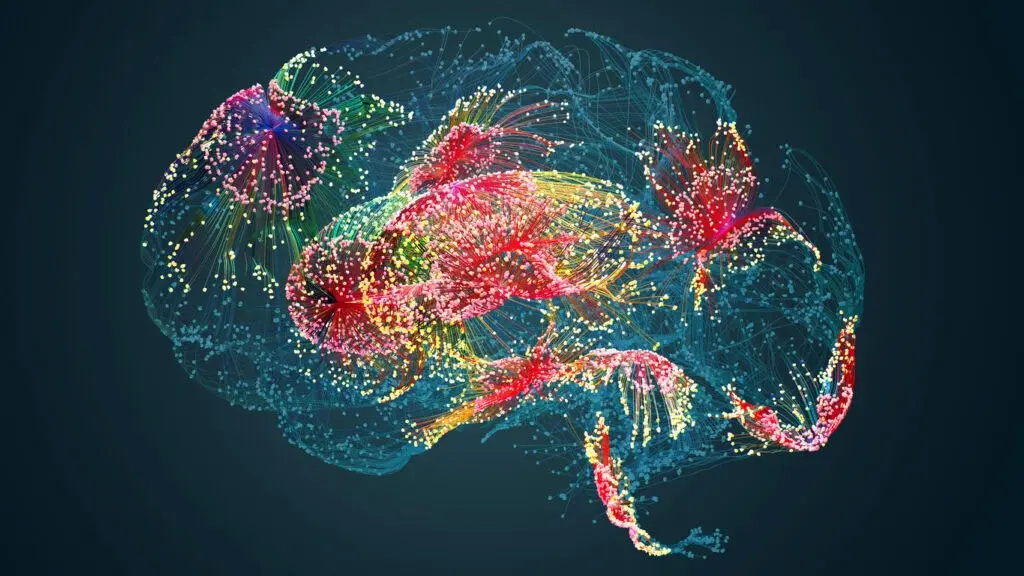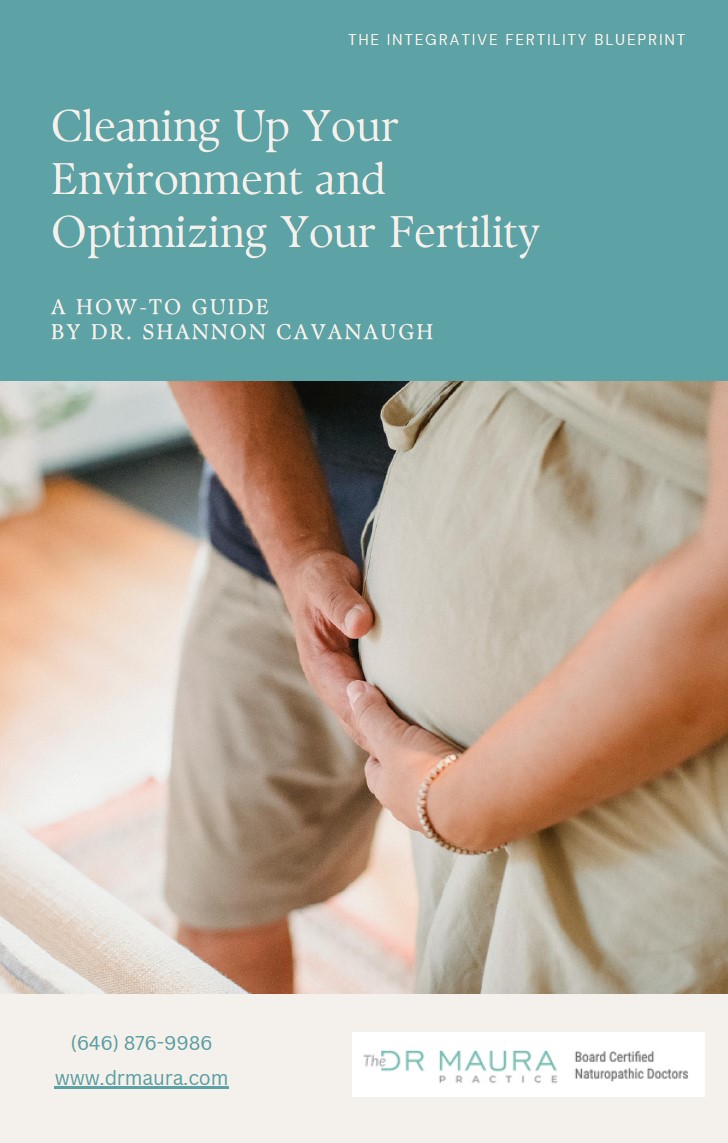(646) 760-6627
The Gut–Brain Axis: How the Nervous System Shapes Gut Health
Published: October 24, 2025


Originally published in Naturopathic Doctor News & Review (NDNR)
By Maura Henninger, ND — October 1, 2025
Understanding the gut–brain connection reveals how stress, the autonomic nervous system, and the microbiome shape digestion, immunity, and emotional well-being—and how naturopathic care can restore balance.
Abstract
The gut–brain axis is a dynamic communication network linking the nervous system, microbiome, and digestion. This article explores how nervous system regulation influences gut health, the consequences of dysregulation, and naturopathic strategies to optimize resilience and restore harmony.
Introduction
The human gut is far more than a digestive organ. It is an intricate ecosystem of epithelial tissue, immune networks, microbial communities, and neural circuits that together regulate not only digestion but also mood, cognition, and systemic resilience. Over the last two decades, research has illuminated the gut–brain axis—a dynamic, bidirectional communication system linking the central nervous system (CNS), the enteric nervous system (ENS), and the gut microbiome.3,6
For naturopathic and integrative practitioners, understanding this axis is essential. It allows digestive health to be viewed not as an isolated issue but as the reflection of whole-person physiology. The brain and nervous system are deeply involved in gut function, from motility to permeability to microbial balance. Stress, trauma, autonomic imbalance, and neuroinflammation can manifest in irritable bowel syndrome (IBS), dysbiosis, small intestinal bacterial overgrowth (SIBO), and even inflammatory bowel disease (IBD).1,4
The focus here is on the gut–brain connection with particular attention to the nervous system’s role in regulating gut health, the consequences of dysregulation, and naturopathic protocols that help restore balance.
Anatomy of the Gut–Brain Axis
The Enteric Nervous System (ENS): The “Second Brain”
The ENS consists of more than 100 million neurons embedded in the walls of the gastrointestinal tract—more than in the spinal cord. These neurons regulate motility, secretion, and blood flow independent of direct CNS control. Neurotransmitters such as serotonin, dopamine, GABA, and acetylcholine are produced in abundance here, shaping not only digestion but also emotional states.3,5
Vagus Nerve: The Superhighway
The vagus nerve is the primary channel of communication between the brain and gut. Sensory fibers carry information about gut stretch, inflammation, and microbial metabolites to the brainstem. Motor fibers deliver signals that adjust motility, secretion, and immune activity. A healthy vagal tone is critical for optimal gut function, while vagal impairment contributes to disorders like gastroparesis and IBS.1
Microbiota–Neurotransmitter Interface
The microbiome produces metabolites—short-chain fatty acids (SCFAs), tryptophan derivatives, and bile acid transformations—that directly influence neuronal signaling. Certain strains of Lactobacillus and Bifidobacterium can synthesize GABA and serotonin precursors, which influence both local ENS activity and central mood regulation.2,11
Stress, the Autonomic Nervous System, and Gut Health
Sympathetic vs. Parasympathetic Balance
The sympathetic nervous system (SNS) prepares the body for “fight or flight.” It shunts blood away from the digestive tract, slows motility, and alters secretion. Chronic sympathetic dominance is associated with hypochlorhydria, dysbiosis, and poor nutrient absorption.
The parasympathetic system—mediated largely by the vagus nerve—promotes “rest and digest” activity. Adequate parasympathetic tone enhances peristalsis, enzyme output, and mucosal immune function. Many gut disorders reflect a breakdown in this balance, with sympathetic overactivation and parasympathetic underactivity.1
Stress Hormones and the Gut Barrier
Cortisol and catecholamines directly alter gut physiology. Elevated cortisol increases intestinal permeability (“leaky gut”) by disrupting tight junction proteins such as occludin and zonulin.9,10 Stress hormones also shift the microbiome toward less diverse, more inflammatory profiles, reducing SCFA production and increasing pathobionts.8
Neuroinflammation and Enteric Immunity
The gut is the largest immune organ in the body. Stress-driven neuroinflammation modulates immune responses in the intestinal mucosa. Overactivation of microglia and mast cells can perpetuate gut inflammation, leading to chronic conditions like IBD or post-infectious IBS.4,6
Clinical Manifestations of Gut–Brain Dysregulation
Irritable Bowel Syndrome (IBS)
IBS is a classic disorder of gut–brain dysregulation. Patients often exhibit altered ENS activity, heightened visceral sensitivity, and disrupted motility. Psychological stress and trauma history are common, and functional imaging shows abnormal brain–gut communication. Targeting the nervous system is often as important as dietary therapy.6
Dysbiosis and SIBO
Autonomic imbalance alters peristalsis and gastric acid secretion, setting the stage for microbial overgrowth. Low vagal tone slows the migrating motor complex (MMC), a sweeping wave of electrical activity that clears bacteria from the small intestine. Without proper MMC function, patients are vulnerable to recurrent SIBO.1
Inflammatory Bowel Disease (IBD)
In IBD, neuroimmune crosstalk is central. Stress activates mast cells and sympathetic signaling, which worsen mucosal inflammation. Vagal stimulation, conversely, has been shown to reduce pro-inflammatory cytokines through the “cholinergic anti-inflammatory pathway.”1,4
Anxiety and Depression
The relationship is not one-directional. Just as stress worsens gut health, gut imbalances contribute to psychiatric symptoms. Dysbiosis alters neurotransmitter metabolism and increases gut permeability, leading to systemic inflammation and changes in brain function. Many patients with IBS also meet criteria for anxiety or depression.7,11
Naturopathic Approaches to Supporting the Gut–Brain Axis
Mind–Body Interventions
- Meditation and Breathwork: These practices increase vagal tone, reduce cortisol, and improve heart rate variability (HRV). Studies show mindfulness interventions reduce IBS symptoms and improve quality of life.6
- Somatic Therapies: Yoga, progressive muscle relaxation, and biofeedback directly engage the parasympathetic system.
- Trauma-Informed Care: Addressing adverse childhood experiences (ACEs) is critical, as trauma profoundly alters nervous system set-points and gut health.8
Nutritional Strategies
- Polyphenols and Prebiotics: Foods rich in polyphenols (berries, green tea, pomegranate) support microbial diversity and SCFA production. Prebiotic fibers, such as inulin, enhance butyrate levels, which nourish colonocytes and support gut barrier integrity.3
- Amino Acid Therapy: L-glutamine supports enterocyte repair, while tryptophan provides substrate for serotonin synthesis.
- Anti-Inflammatory Diets: Removing processed foods, excessive sugars, and inflammatory oils reduces sympathetic activation and systemic inflammation.4
Botanical Medicine
- Adaptogens (Ashwagandha, Rhodiola): Modulate HPA-axis activity, reducing cortisol burden on the gut.
- Demulcents (Slippery Elm, Marshmallow): Provide mucosal protection for stressed or permeable gut linings.
- Nervines (Chamomile, Lemon Balm): Calm sympathetic overdrive while directly soothing gut spasms.
Probiotics and Psychobiotics
Specific strains demonstrate nervous system effects:
- Lactobacillus rhamnosus reduces anxiety-like behavior in animal models via GABA receptor modulation.2
- Bifidobacterium longum decreases cortisol and improves depression scores in humans.7
- Multi-strain formulations can improve both bowel function and mood in IBS patients.6
Lifestyle and Behavioral Medicine
- Sleep Hygiene: Poor sleep worsens both sympathetic tone and gut microbial imbalance.
- Movement: Regular exercise improves vagal activity, reduces inflammation, and supports microbial diversity.
- Digital Hygiene: Excess screen time and blue-light exposure alter circadian rhythms, which in turn affect gut motility and microbiome balance.
Clinical Protocol Table
| Focus Area | Intervention | Mechanism |
| Nervous System Reset | Meditation, HRV biofeedback, vagal toning | Enhances parasympathetic tone, reduces stress hormones |
| Gut Barrier Support | L-glutamine, zinc carnosine, demulcents | Repairs mucosal lining, restores tight junction proteins |
| Microbiome Modulation | Prebiotics, probiotics, polyphenols | Promotes diversity, increases SCFA production |
| Neuroendocrine Balance | Adaptogens, sleep optimization | Lowers cortisol, supports circadian rhythms |
| Inflammation Reduction | Omega-3 fatty acids, curcumin, vagal activation | Lowers pro-inflammatory cytokines via neuroimmune pathways |
Future Directions in Research
The field of psychoneurogastroenterology is rapidly expanding. Some promising areas include:
- Vagus Nerve Stimulation (VNS): Non-invasive devices are now FDA-approved for depression and epilepsy. Early studies suggest benefits for IBD and functional GI disorders.1
- Microbiome-Based Psychobiotics: Next-generation probiotics are being designed to target mood and cognitive function directly.11
- Personalized Medicine: Genetic, metabolomic, and microbiome testing may allow individualized mapping of gut–brain dysfunctions and precision interventions.4
Conclusion
The gut–brain axis highlights the deep interconnectedness of human physiology. The nervous system does not merely respond to gut cues—it actively shapes digestion, microbial balance, and immune function. When the axis falls out of harmony, patients may experience a spectrum of disorders from IBS to depression.
For naturopathic physicians, this underscores the importance of treating the nervous system alongside the gut. Stress management, mind–body practices, botanical and nutritional therapies, and microbial modulation all form part of a comprehensive, patient-centered approach.
By restoring communication along the gut–brain highway, patients can achieve not only digestive health but also mental and emotional resilience.
References
- Bonaz B, Bazin T, Pellissier S. (2018). The vagus nerve at the interface of the microbiota–gut–brain axis. Frontiers in Neuroscience, 12:49.
- Bravo JA, Forsythe P, Chew MV, et al. (2011). Ingestion of Lactobacillus strain regulates emotional behavior and central GABA receptor expression in a mouse via the vagus nerve. Proceedings of the National Academy of Sciences, 108(38), 16050–16055.
- Carabotti M, Scirocco A, Maselli MA, Severi C. (2015). The gut–brain axis: interactions between enteric microbiota, central and enteric nervous systems. Annals of Gastroenterology, 28(2), 203–209.
- Cryan JF, O’Riordan KJ, Sandhu K, Peterson V, Dinan TG. (2020). The gut microbiome in neurological disorders. Lancet Neurology, 19(2), 179–194.
- Furness JB. (2012). The enteric nervous system and neurogastroenterology. Nature Reviews Gastroenterology & Hepatology, 9(5), 286–294.
- Mayer EA, Tillisch K, Gupta A. (2015). Gut/brain axis and the microbiota. Journal of Clinical Investigation, 125(3), 926–938.
- Pinto-Sanchez MI, Hall GB, Ghajar K, et al. (2017). Probiotic Bifidobacterium longum NCC3001 reduces depression scores and alters brain activity: a pilot study in patients with IBS. Gastroenterology, 153(2), 448–459.
- Sudo N, Chida Y, Aiba Y, et al. (2004). Postnatal microbial colonization programs the hypothalamic–pituitary–adrenal system for stress response in mice. Journal of Physiology, 558(1), 263–275.
- Söderholm JD, Perdue MH. (2001). Stress and gastrointestinal tract. II. Stress and intestinal barrier function. American Journal of Physiology – Gastrointestinal and Liver Physiology, 280(1), G7–G13.
- Vanuytsel T, van Wanrooy S, Vanheel H, et al. (2014). Psychological stress and corticotropin-releasing hormone increase intestinal permeability in humans by a mast cell–dependent mechanism. Gut, 63(8), 1293–1299.
- Valles-Colomer M, Falony G, Darzi Y, et al. (2019). The neuroactive potential of the human gut microbiota in quality of life and depression. Nature Microbiology, 4, 623–632.
Ready to Transform Your Health & Well-Being?
At Flora Naturopathics, we are passionate about supporting you every step of the way. Schedule your personalized consultation today and embark on a journey to vibrant, optimal wellness. Don't wait, your path to a healthier, happier life starts here.
Fill out the form below to schedule your appointment. Have any questions? Give us a call at (646) 760-6627 and we'll be happy to help.

